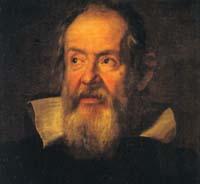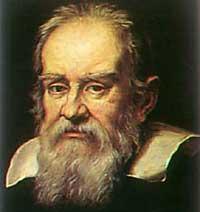This star year of astronomy
2009/01/17 Galarraga Aiestaran, Ana - Elhuyar Zientzia
Astronomy has given us the excuse. And astronomers Galileo Galilei has been given the excuse to celebrate this year's international year. In fact, 400 years ago Galileo looked into the sky with a telescope and discovered what no one had ever seen before. Or, perhaps, the same things someone was going to see, but he was not aware of them or was not able to interpret them. Galileo yes: Galileo saw mountains and craters on the Moon. And that was the opposite of what they thought until then.

According to the beliefs of the time, all celestial bodies were perfect, very smooth spheres. Galileo, however, abandoned dogmas and convictions and made systematic observations. Thus, he saw the phases of Venus, the moon of Jupiter and other phenomena and was able to interpret correctly what he saw. It was an important milestone in astronomy and that is why this year they have organized the year of astronomy.
Otherwise, astronomy has sufficient importance and excuse to give an international year. It is the oldest science: since the stars realized that they influenced everyday life, people have looked into the sky. Always. Astronomy was not, at all, a pure science: besides other sciences and techniques, it included religion, myths and beliefs.
XX. Until the nineteenth century they did not completely separate themselves from astronomy and astrology, but for this distinction was essential the work of Copernicus, Kepler, Newton and other scientists and astronomers. Of course, also from Galileo. This year we will be reminded and invited to take a telescope and look to the sky. And many other activities and sessions. Be attentive because almost everyone is for anyone!
Looking from the telescope
However, the year passes and there may be more fans than before. Yes, it is certain that astronomers will continue to look into the sky. Instruments such as the telescope used by Galileo are still used. It was an optical telescope, that is, a tool that, through the lenses, brings the image to a distance. This is, for example, the famous Hubble Telescope.
The Hubble telescope is characterized by being in space. In this way, the atmosphere does not bother and receives clearer and more accurate images than terrestrial telescopes. Also the farthest, and going far in space is going back in time. But not only in that it differs from the telescope used by Galileo, but it also collects other wavelengths of the light spectrum. Thus, it also works in infrared and ultraviolet, so it serves to observe many phenomena that are not seen in visible light.
Precisely thanks to observations made at other wavelengths, astronomers have answered many questions. And as questions are answered, new questions are being generated. Now a telescope is being designed to help them find answers. One of them is the E-ELT (European Extra Large Telescope) that they want to launch next year. According to astronomer Gilmozzi, who works on this telescope, this telescope is a leap from the view to the Galileo telescope with regard to current ones. We will see it, perhaps with a telescope.
Published in Gara

Gai honi buruzko eduki gehiago
Elhuyarrek garatutako teknologia





